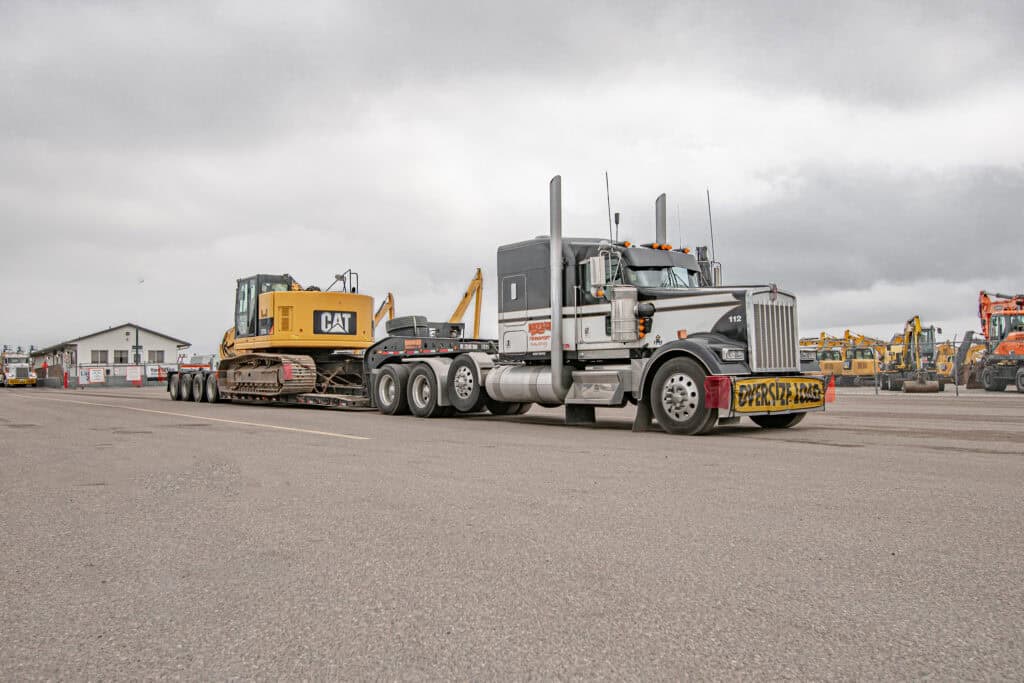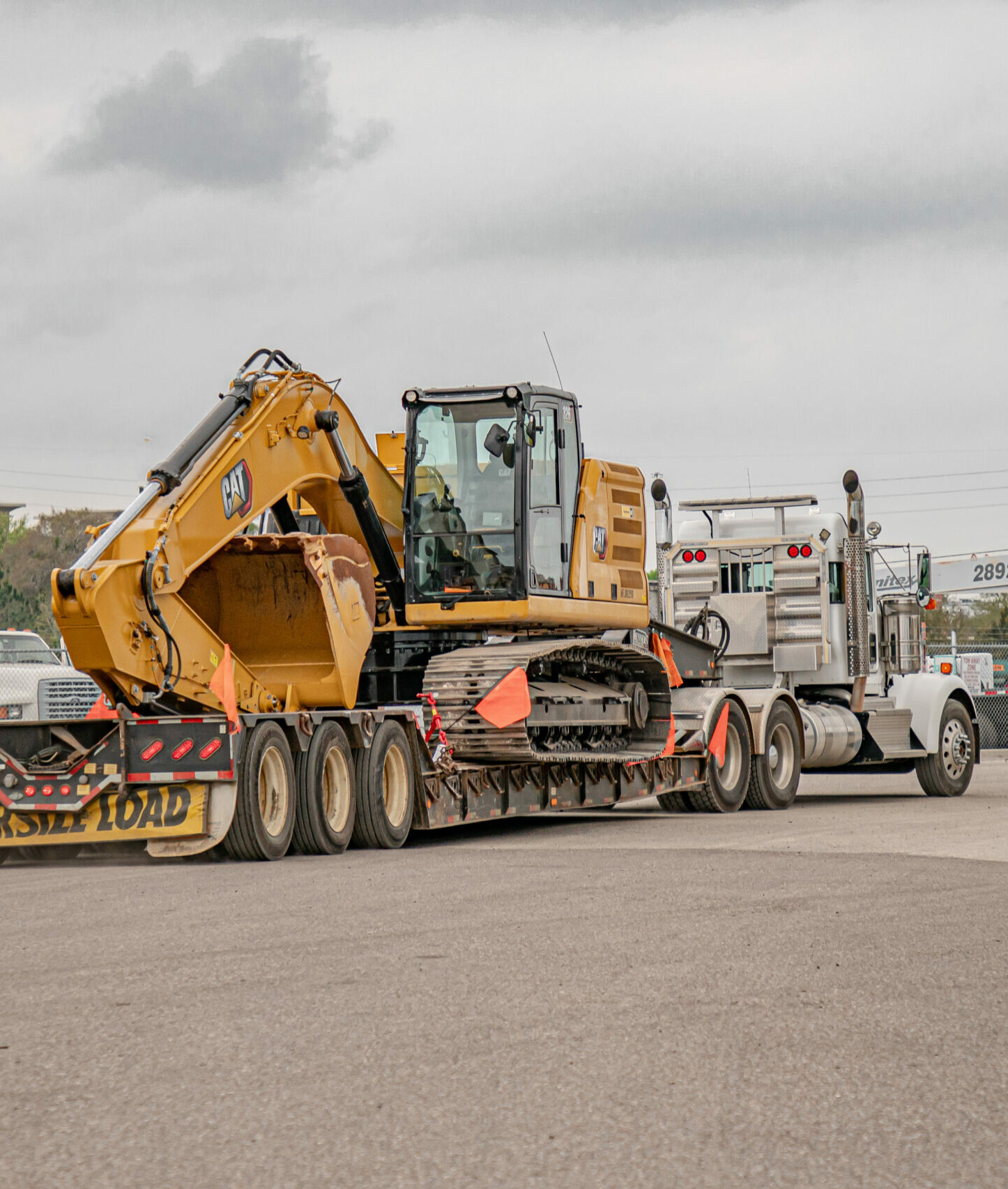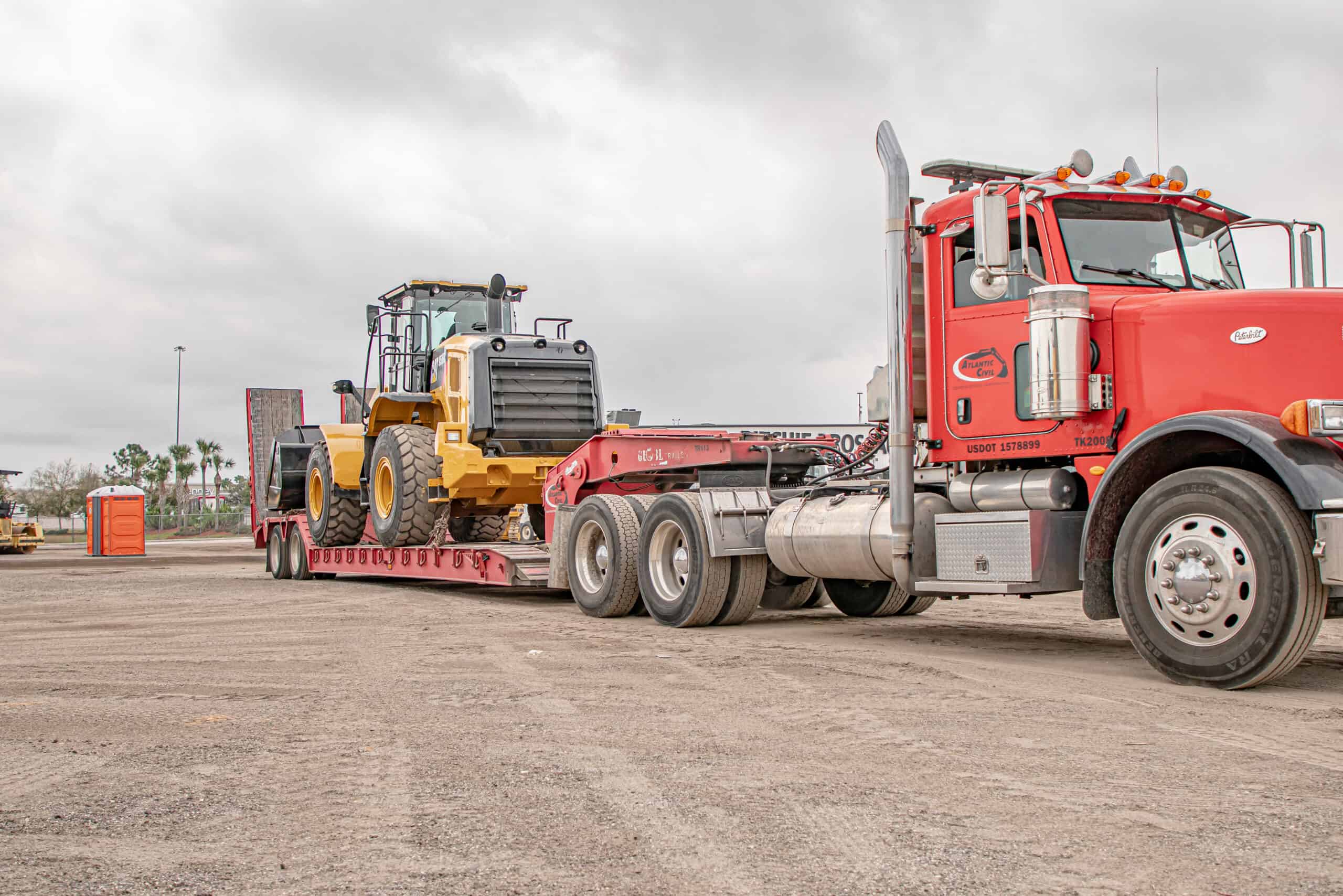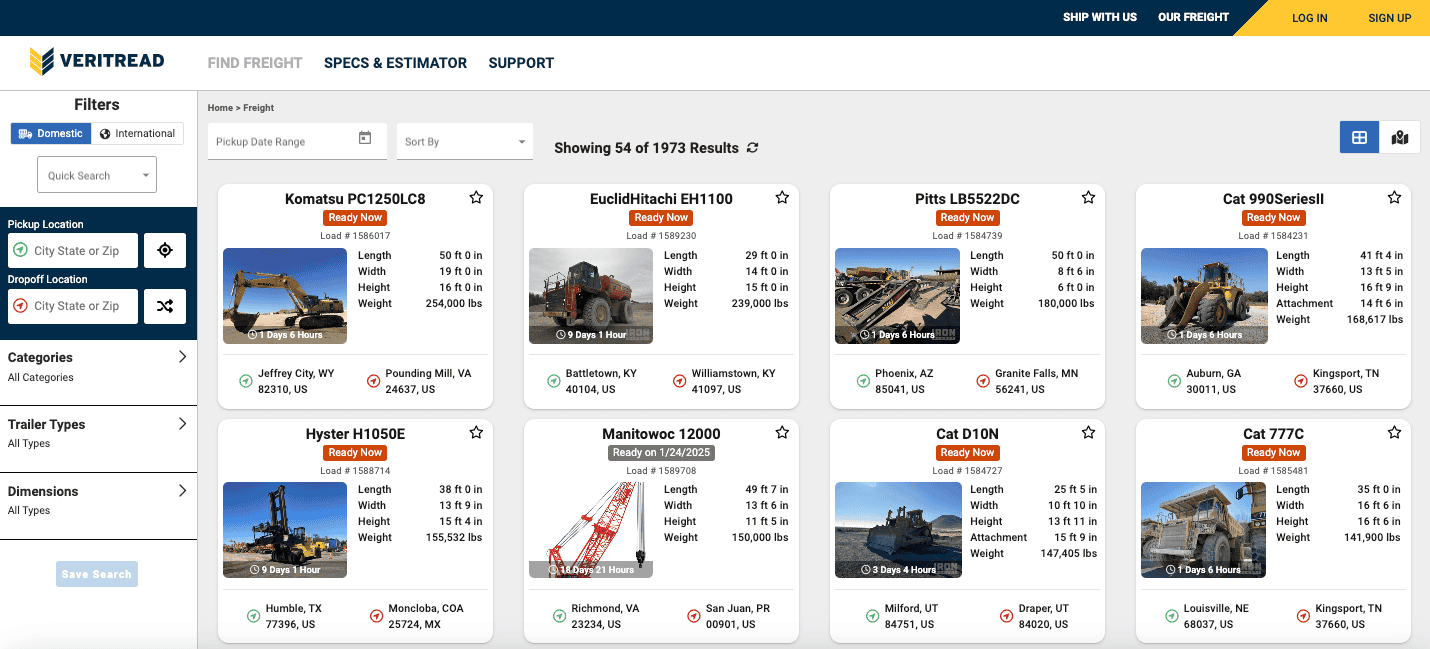Heavy Freight Delivery: Costs, Methods, and Tips

Shipping heavy freight is a complex but important part of many industries. Whether you’re a business owner shipping large equipment or a logistics professional managing high-volume freight, understanding the ins and outs of heavy freight delivery is crucial. From choosing between Less Than Truckload (LTL) and Full Truckload (FTL) services to navigating shipping costs and accessorial charges, there’s a lot to consider.
This article will clarify heavy freight delivery, answer common questions, and provide actionable tips to make your shipping process smoother and more cost-effective.
Outline:
- What is the Difference Between Freight and Small Package Shipping?
- When Does it Make Sense to Use LTL vs. Full Truckload Services?
- How Do I Determine My Shipping Cost?
- What are Accessorial Charges, and How Can They Impact My Shipping Costs?
- What are the Best Practices for Preparing Heavy Freight for Shipment?
What is the Difference Between Freight and Small Package Shipping?
The primary difference between freight and small package shipping lies in the size, weight, and complexity of the shipment.
Freight Shipping:
- Handles large, heavy, or bulky items. Think construction equipment, industrial machinery, large appliances, and oversized furniture.
- Often involves specialized equipment like flatbed trucks, cranes, and forklifts for loading, unloading, and transportation.
- Typically involves more complex logistics including route planning, permitting (for oversized loads), and specialized handling procedures.
- Common carriers include: LTL (Less Than Truckload) and FTL (Full Truckload) carriers.
Small Package Shipping:
- Handles smaller, lighter packages typically weighing under 150 pounds.
- Uses standard shipping methods like trucks, planes, and trains to transport packages.
- Often involves door-to-door delivery with more frequent and predictable delivery times.
- Common carriers include: UPS, FedEx, and USPS.
When Does it Make Sense to Use LTL vs. Full Truckload Services?
LTL (Less Than Truckload) is generally more suitable when:
- You have a smaller shipment: If your cargo doesn’t fill an entire truck, LTL is more cost-effective as you only pay for the space you use.
- Budget is a primary concern: LTL typically has lower upfront costs compared to FTL.
- Delivery time is less critical: LTL shipments may take longer to reach their destination due to multiple stops and transfers.
FTL (Full Truckload) is a better choice when:
- You have a large shipment: If your cargo fills a significant portion of a truck or requires an entire trailer, FTL offers greater control and faster delivery times.
- Time-sensitive delivery is crucial: FTL shipments are typically faster, as they don’t involve multiple stops and transfers.
- Cargo requires special handling or security: FTL provides greater control over your shipment and minimizes the risk of damage or loss.
- You need to control the entire transportation process: FTL allows you to choose the carrier, route, and delivery schedule.
How Do I Determine My Shipping Cost?
Shipping costs can vary widely based on several factors. Here’s what influences the final price:
- Freight Class: This classification system considers factors like density, stowability, handling, and liability. A higher freight class often means higher costs.
- Weight: Heavier shipments may have lower costs per pound due to economies of scale, but total weight still plays a significant role.
- Distance: The farther your shipment travels, the higher the cost. Routes requiring multiple stops may also be more expensive.
- Special Requirements: Oversized or delicate items that need custom handling will increase costs.
To get an accurate estimate, request detailed quotes from freight carriers or brokers, ensuring all cost factors are transparently listed.
What are Accessorial Charges, and How Can They Impact My Shipping Costs?
Accessorial charges are additional fees that freight carriers bill to their customers when extra services are required beyond standard pick-up and delivery. These services are not included in the initial base rate and are added to your freight invoice.
Here are some common examples of accessorial charges:
- Liftgate Service: If your delivery location doesn’t have a loading dock, a liftgate truck is needed to raise and lower the freight.
- Inside Delivery: If your shipment needs to be delivered inside a building or to a specific location within a building.
- Residential Delivery: Deliveries to homes or residential areas often incur a surcharge.
- Limited Access Delivery: Deliveries to locations with difficult access (e.g., narrow roads, remote areas) may incur extra fees.
- Detention: If the carrier’s driver experiences unexpected delays at the loading or unloading dock, detention charges may apply.
- Fuel Surcharges: These fluctuate based on fuel costs and help offset rising transportation expenses.
- Overweight/Overdimensional Charges: For shipments exceeding weight or size limits, additional fees may apply.
Tips for Minimizing Accessorial Charges:
- Plan Ahead: Carefully consider your delivery requirements and inform the carrier about any special needs in advance.
- Choose the Right Carrier: Select a carrier with a transparent pricing structure and clearly defined accessorial charges.
- Optimize Your Delivery Location: If possible, choose a delivery location with easy access and loading/unloading capabilities.
- Communicate Effectively: Clearly communicate your delivery requirements to the carrier to avoid unexpected charges.
- Negotiate Rates: If you have consistent shipping needs, negotiate with carriers for favorable rates and accessorial charges.
By understanding accessorial charges and taking steps to minimize them, you can better control your shipping costs and ensure a smoother, more cost-effective delivery process.
What are the Best Practices for Preparing Heavy Freight for Shipment?
Thorough Inspection and Preparation:
- Clean and Dry: Ensure the machinery is clean and free of any debris, oil, or grease. This prevents contamination and potential damage during transport.
- Fuel Levels: If applicable, drain fluids to the appropriate levels. Consult the owner’s manual for specific instructions.
- Remove Loose Parts: Securely fasten or remove any loose parts (e.g., hoses, attachments, batteries). Pack these separately if necessary.
- Protect Moving Parts: Cover or protect any sensitive parts (e.g., controls, displays) with appropriate materials (e.g., foam, bubble wrap).
Secure and Stabilize:
- Palletization: If possible, place the machinery on a sturdy pallet to facilitate loading, unloading, and handling.
- Strapping and Securing: Use appropriate straps, chains, or other securing methods to prevent movement during transport. Ensure the machinery is firmly attached to the trailer or container.
- Blocking and Bracing: Use blocking and bracing materials (e.g., wood, foam) to fill gaps and prevent shifting or damage.
Choose the Right Carrier:
- Select a Carrier with Experience: Choose a freight carrier with experience in handling heavy machinery and specialized equipment.
- Discuss Special Requirements: Discuss any special requirements with the carrier in advance, such as loading/unloading assistance, route restrictions, or delivery appointments.
Communicate with the Receiver:
- Coordinate Delivery: Coordinate the delivery with the receiver in advance to ensure a smooth and timely arrival.
- Provide Instructions: Provide clear instructions to the receiver on how to handle and unpack the machinery safely.
By following these best practices, you can minimize the risk of damage during transport and ensure that your heavy freight arrives at its destination safely and on time.
Do You Need Help or Have More Questions About Shipping Your Heavy Equipment?
VeriTread is your go to solution for heavy equipment transport. We can transport your freight to any destination in North America in a safe and timely manner. We are experts in connecting you with a transport provider that can handle all the paperwork, select the right trailer and driver, and chart the most efficient route.
VeriTread moves thousands of machines every year and can quickly generate a reliable estimate on the go. Our extensive specs and dimensions database of 60,000+ items, ensures you spend less time researching and more time putting your equipment to work. The VeriTread Shipper quote process is the simplest way to receive competitive quotes from vetted transport providers. Follow these easy steps and you will receive a quote in under one minute:
- Select Ready To Ship from the Freight Options Page
- Enter a Manufacturer & Model
- Verify or Edit Your Machine Dimensions
- Enter Pickup & Drop Off Locations
- Your Quote is Ready!
veritread products
Top Articles
Freight Types
recent posts

Basic Tips of Heavy Equipment Transport

Understanding Equipment Transport Services


